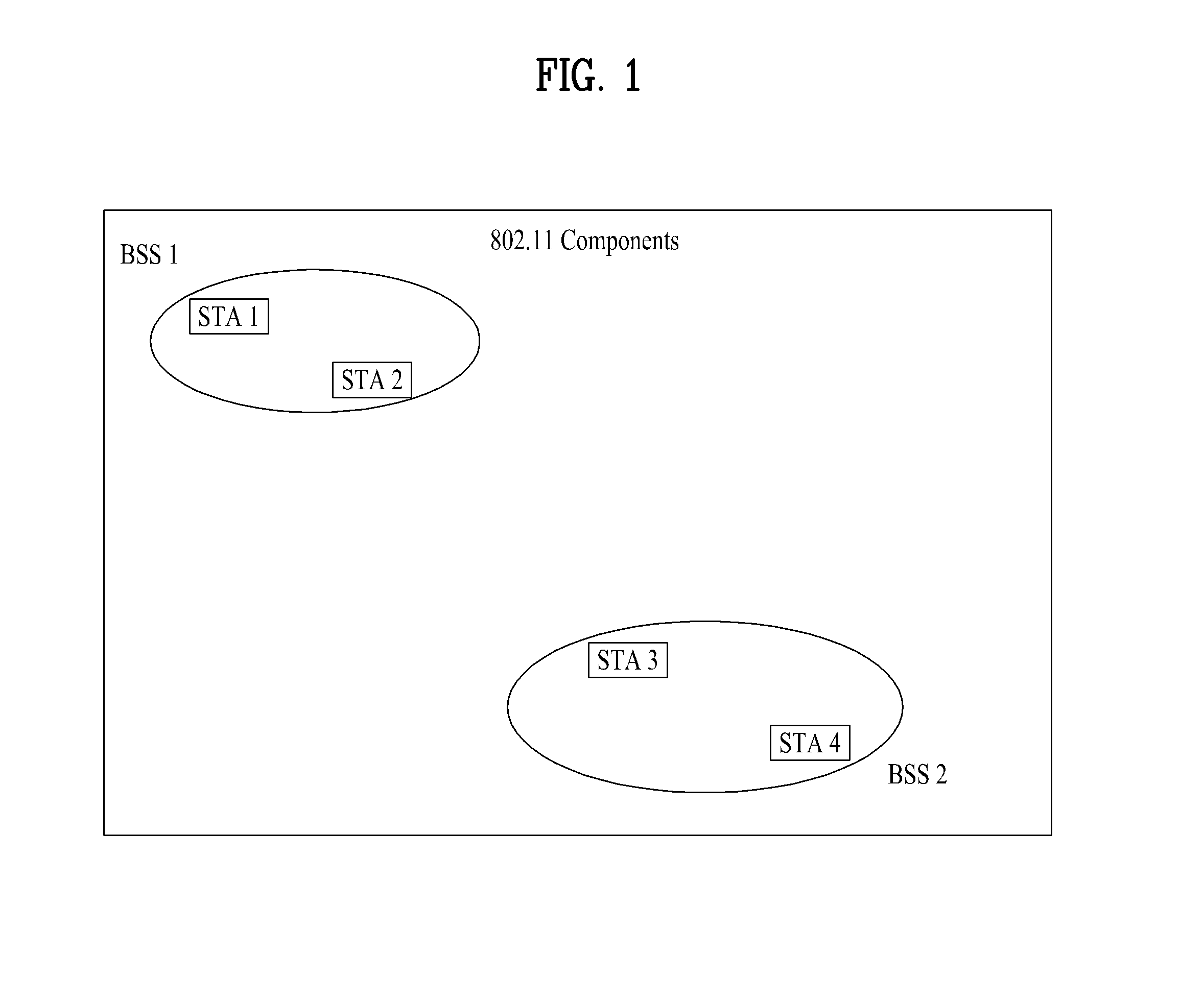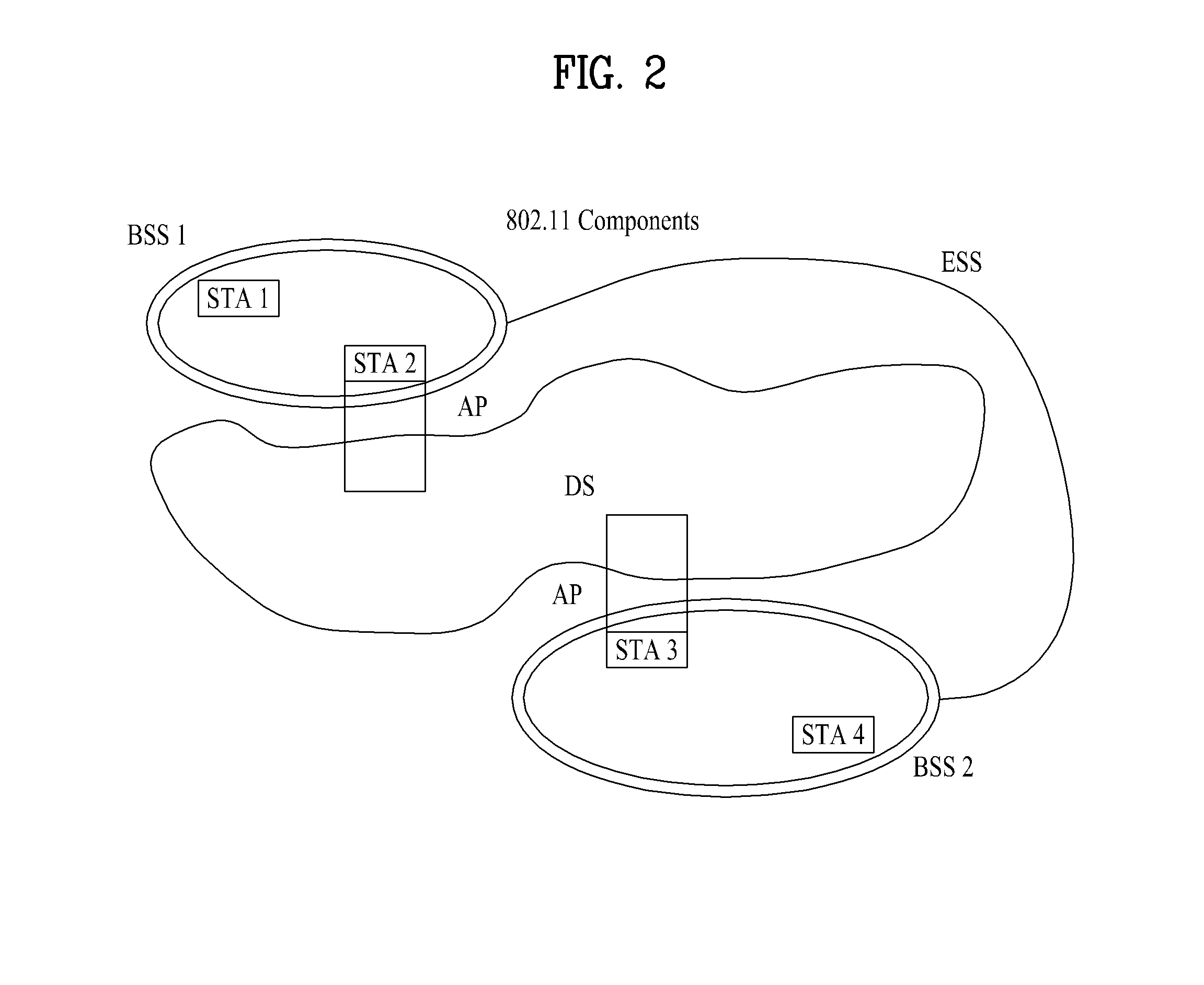Method and apparatus for transceiving signals in wireless communication systems
a wireless communication system and wireless communication technology, applied in the direction of electrical equipment, wireless communication services, wireless commuication services, etc., can solve the problem of limited transmission output power, and achieve the effect of minimizing processing load
- Summary
- Abstract
- Description
- Claims
- Application Information
AI Technical Summary
Benefits of technology
Problems solved by technology
Method used
Image
Examples
embodiment 1
[0079]FIG. 7 illustrates an exemplary channelization structure that may correspond to a prerequisite of Exemplary Embodiment 1. In FIG. 7, a horizontal axis refers to a frequency axis, and each rectangular box indicates a WLAN channel. Number marked in each rectangular box corresponds to a bandwidth of the respective channel, and a carrier frequency (center frequency) of the respective channel is marked at the center of each box. And, a shaded area corresponds to the common sensing band. FIG. 7 shows a WLAN channelization in 4 consecutive TV channels, and in the overall TV WS bandwidth the details shown in FIG. 7 are repeated for each set of 4 TV channels.
[0080]Moreover, referring to FIG. 7, in case of a 4 MHz channel, for a case when the WLAN user equipment can use only 1 TV channel, a guard band of 1 MHz is set up on each side of the TV channel, and the 4 MHz channel is located at the center of the TV channel. This is to meet with a spectrum mask of a Regulation. When the WLAN use...
embodiment 2
[0084]In the channelization structure of FIG. 7, in case of the 4 MHz channel, since the position of the common sensing band can be located at any one of the right side or the right side of the channel (based upon a lower frequency), the user equipment is required to be capable of differentiating such positioning.
[0085]If the channelization is corrected (or amended) to allow the common sensing band to always be located at each end of the 4 MHz channel regardless of the position of the 4 MHz channel, so that the user equipment is no longer required to differentiate the position of the channel, the structure may be configured a shown in FIG. 9. In case of the channelization structure shown in FIG. 9, if the frame structure proposed in the present invention is applied to channels having bandwidths of 4 MHz, 8 MHz, and 16 MHz, the structure may be configured as shown in (a), (b), and (c) of FIG. 10.
embodiment 3
[0086]FIG. 11 illustrates an exemplary channelization when it is assumed that the WLAN user equipment can use a 16 MHz channel while positioning a guard band of 1 MHz at each end of 3 consecutive TV channels. This is a structure that can be configured when the performance of the RF chip is sufficiently excellent. In the channelization structure shown in FIG. 11, the common sensing band may correspond to a maximum of 3 MHz. Additionally, it will be evident that the common sensing band can be set to 1 MHz or 2 MHz for symmetry in the configuration. (a), (b), and (c) of FIG. 12 illustrate a frame structure, wherein the proposition of the present invention is applied to the channelization structure shown in FIG. 11.
PUM
 Login to View More
Login to View More Abstract
Description
Claims
Application Information
 Login to View More
Login to View More - R&D
- Intellectual Property
- Life Sciences
- Materials
- Tech Scout
- Unparalleled Data Quality
- Higher Quality Content
- 60% Fewer Hallucinations
Browse by: Latest US Patents, China's latest patents, Technical Efficacy Thesaurus, Application Domain, Technology Topic, Popular Technical Reports.
© 2025 PatSnap. All rights reserved.Legal|Privacy policy|Modern Slavery Act Transparency Statement|Sitemap|About US| Contact US: help@patsnap.com



